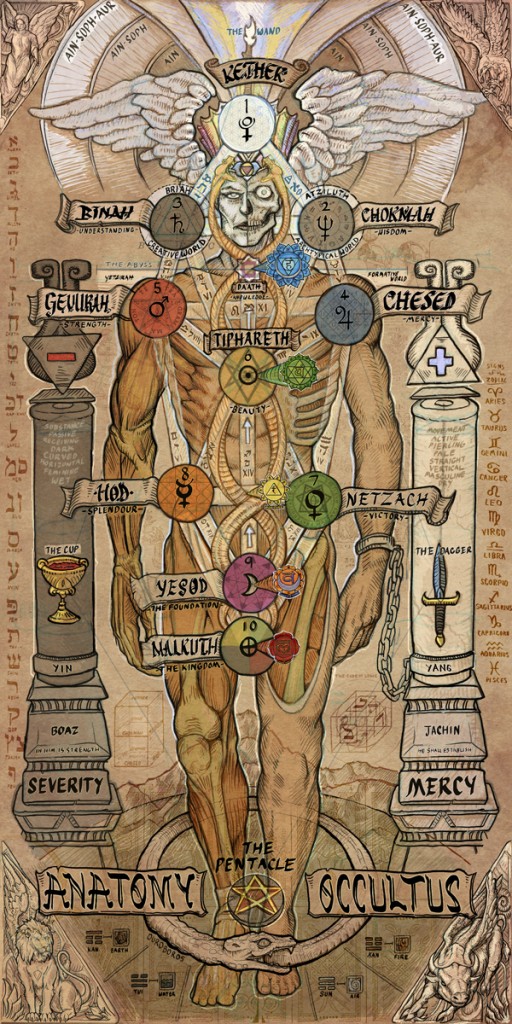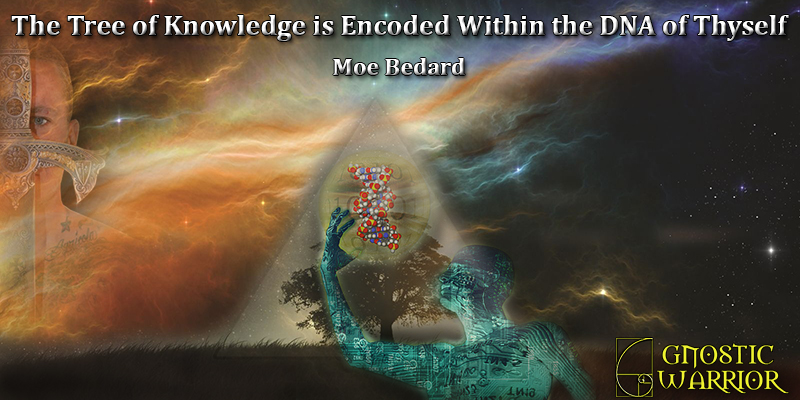I will be like the dew to Israel; He will blossom like the lily, And he will take root like the cedars of Lebanon. His shoots will 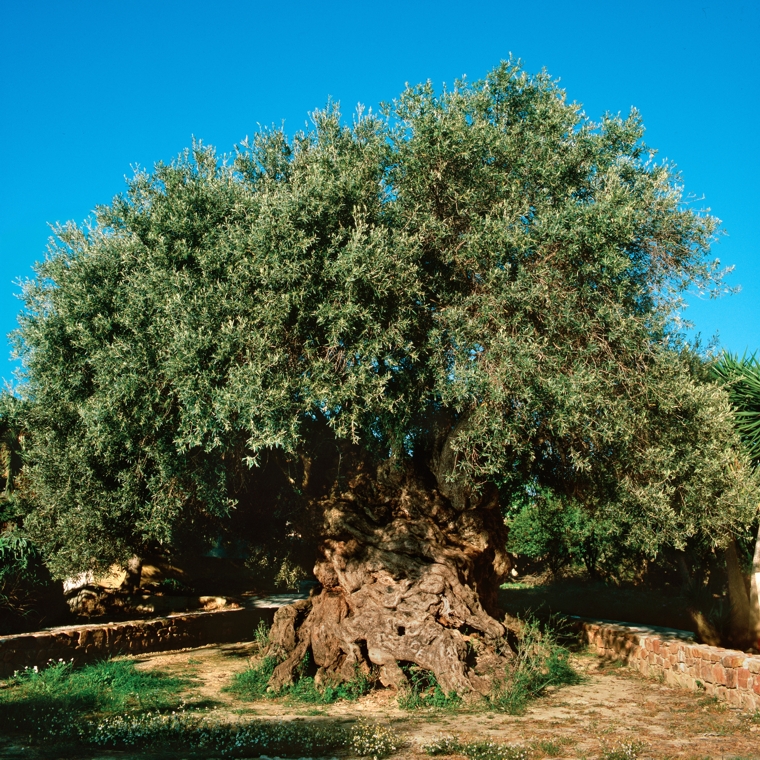 sprout, And his beauty will be like the olive tree And his fragrance like the cedars of Lebanon. Hosea 14:5-6
sprout, And his beauty will be like the olive tree And his fragrance like the cedars of Lebanon. Hosea 14:5-6
For the purpose of this article, I would like to mainly focus on the Olive Tree spoken about in the Scripture and the first cultivators of Olives who were the same people involved in writing the Hebrew Bible and Old Testament, being that of the Phoenicians and later Greek Athenians. For example, there is an ancient olive tree in Crete known as the Finix (Phoenix) Olive that is said to be over 2,000 years old.
A tree that I believe is the biblical Olive tree of Abraham pictured to the right. It symbolizes the covenants made by the People of the Book being that of the ancient Israelites and Gentiles that was originally made in the Land of Canaan, which I believe to be the Holy Island of Crete and the focus of this article.
In 1997, the tree was declared a protected natural monument, and in October 2009, the Olive Tree Museum of Vouves was inaugurated in a nearby 19th-century house, displaying the traditional tools and process of olive cultivation. Branches from the tree were used to weave victors’ wreaths for the winners of the 2004 Athens Olympics and the 2008 Beijing Olympics.(wikipedia)
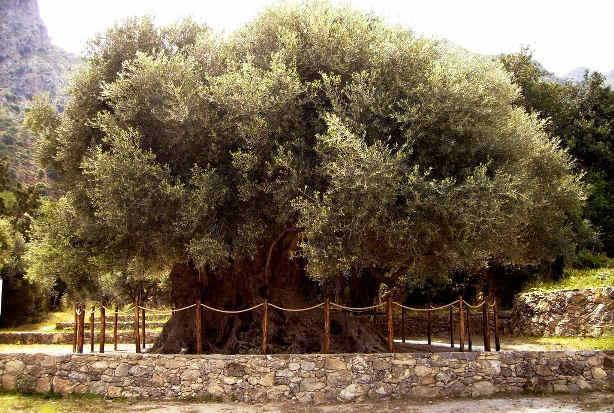 Canaan was also called the Promise Land which was said to be a good land filled with the necessities to sustain life for Moses and the sons of Israel such as water, olive oil and honey: “For the LORD your God is bringing you into a good land, a land of brooks of water, of fountains and springs, flowing forth in valleys and hills; (8) a land of wheat and barley, of vines and fig trees and pomegranates, a land of olive oil and honey…. (Deuteronomy 8:7-8 NASB)
Canaan was also called the Promise Land which was said to be a good land filled with the necessities to sustain life for Moses and the sons of Israel such as water, olive oil and honey: “For the LORD your God is bringing you into a good land, a land of brooks of water, of fountains and springs, flowing forth in valleys and hills; (8) a land of wheat and barley, of vines and fig trees and pomegranates, a land of olive oil and honey…. (Deuteronomy 8:7-8 NASB)
This Cretan Olive Tree is one of the first plants mentioned in the Phoenician Hebrew Bible and the Greek Christian Old Testament. Olive oil was also used for lighting, sacrificial offerings, ointment, and anointment for priestly or royal office. The olive is one of the seven species that are noteworthy products of the Land of Israel.(Deuteronomy 8:8) Archaeological evidence found all over Crete verify that Olive Trees and Oil was used for thousands of years as part of every-day life.
For example, an Olive press said to be the oldest in Europe was found on the Southside of the island of Crete in the Vathypetro complex. Even to this very day, the Cretan diet is rich in Olive Oil and is praised as one of the main reasons they are so healthy and live so long. It is one of the main elements in the ancient Israelites life, religion, food and cooking.
It was also a symbol of peace, and also symbolized the covenenants made between their tribes and blood lines. I had written about an old Phoenician from Crete who was one of the Seven Wise Men of Greece, and his name is Epimenides (Greek: Ἐπιμενίδης), whom I also believe to be the mythological law giver known as Solon. One of Solon’s laws said that the uprooting of an olive tree led to the death sentence, and it was not permitted to plant any other kind of tree near an olive tree.
Plutarch had written; “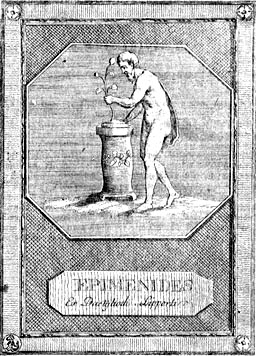 purified Athens after the pollution brought by the Alcmeonidae, and that the seer’s expertise in sacrifices and reform of funeral practices were of great help to Solon in his reform of the Athenian state. The only reward he would accept was a branch of the sacred olive, and a promise of perpetual friendship between Athens and Knossus (Plutarch, Life of Solon, 12; Aristotle, Ath. Pol. 1).
purified Athens after the pollution brought by the Alcmeonidae, and that the seer’s expertise in sacrifices and reform of funeral practices were of great help to Solon in his reform of the Athenian state. The only reward he would accept was a branch of the sacred olive, and a promise of perpetual friendship between Athens and Knossus (Plutarch, Life of Solon, 12; Aristotle, Ath. Pol. 1).
Quite possibly these stories were immortalized by the actual planting of the Olive Tree in these exact same locations where the stories took place, which I believe to be the case. For example, in Athens, Greece, you will find many old Olive Trees such as the “Peisistratos Tree” that is located by the banks of the Cephisus River, in the municipality of Agioi Anargyroi, and is said to be a remnant of an olive grove that was planted by Athenian tyrant Peisistratos in the 6th century B.C.
This tree’s dating would coincide with the story of Epimenides purifying his Brother’s city in Athens and the exchange of the Olive branch as a symbol of friendship between the Cretans whom we can call Israelites and the Athenians.
Pliny the Elder told about a sacred Greek olive tree that was 1,600 years old. There is also an ancient Olive Tree in Athens that was once know as “Plato’s Olive Tree”, which would make it approximately 2,400 years old. The tree comprised a cavernous trunk from which a few branches were still sprouting in 1975, when a traffic accident caused a bus to fall on and uproot it. Since then, the trunk has been preserved and displayed in the nearby Agricultural University of Athens.
As we can see, this custom of the Phoenicians Hebrews who we know also in the Bible as the Israelites, was later passed to the ancient Greeks who we can say today were their cousins and inheritors of their customs and religion. This is fully documented by bother Plutarch and Aristotle in history. Like the Israelites had done, the Greeks also used olive oil in their lamps and temple’s and was the fuel of the eternal flame of the Olympic Games in which the victors were crowned with olive leaves. They also use olive oil to anoint their Kings and athletes.
As we know today, the Greeks were masterful story tellers, poets and myth builders. What first started on the holy island of Crete with the Phoenician Hebrews was later passed to whom they called brothers in Athens, Greece. Like many other ancient cultures, the Athenians wanted to keep the Glory and pride to themselves in the later claim that the olive tree first grew in the city of Athens. Based on the historical accounts of their own Greek writers such as Plutrach and Aristotle, we can safely say that the olive tree and the symbology used both in governmental affairs and religion was passed to them by the Phoenician Hebrews, or who we call the Israelites.
This symbology is related to us in the ancient Athenian myth, where it is said that the Goddess Athena won the patronship of Attica from Poseidon with the gift of the olive. Poseidon was a sea god of the ancient Phoenician Hebrews of Crete whose capital was at Sidon, which is why they referred to themselves as the Sidonians. In his stories of Atlantis, which I’ve proven to be the island of Crete and surrounding islands, the island of Atlantis, (AKA) Crete was the capital of Poseidon.
This God Po-Sidon was the protector to many of their ancient Phoenician ports and later many Greek Hellene cities as well. The Greek Homer had written about the fate of the rulership of Poseidon in a hymn that explains he lost the contest for Athens to Athena. This mythological story is about a true story of the capital of the Phoenician government being that of Crete, in which the city Sidon was then moved to the city of Athens in Greece dedicated to the rulership of the goddess known back then as Athena.
Canaan would become the father of Sidon, meaning ‘firstborn’ as said by Moses in 1 Chronicles 1:13, “And Canaan begat Zidon (Sidon) his firstborn.” At the end of the Book of Zechariah, the Canaanites are also described as “a class of merchants.” Crete had a city with a name like that of the biblical Sidon, that we know of today as Cydonia or Kydonia (Greek Κυδωνία, “quince”). An ancient city-state on the northwest coast of the island of Crete.
In legend, Cydonia was founded by King Cydon, a son of Hermes and of Akakallis, the daughter of King Minos. As I mentioned above, Cydon or Sidon means “first-born.” Hence, the “First Born City of Canaan,” who in mythology was founded by King Cydon and dedicated to the Goddess, Cydonia, who later became Athena, and later in Rome, Minerva. They are the goddesses of wisdom, courage, inspiration, civilization, law and justice, just warfare, mathematics, strength, strategy, the arts, crafts, and skill.
We can also find evidence of this event with Poseidon’s name (
It was at this time that I believe we can prove the merging and intermixing of the DNA seed of the Phoenician Hebrew royalty being that of Sidon, with the Greek royal class of Athena. This story is later allegorically described in Homer’s Odyssey where we find Odysseus crawls beneath two shoots of olive that grow from a single stock. In scripture, this became the olive tree of Abraham where we find the promises to the seed of Abraham that the seed and children of Israel were chosen by god to be separate into the olive tree and nourished by the root.
The seed is the original bloodline of Abraham that created the first root of their ancesteral religion and the covenant which are the promises made to Abraham (Genesis 12:1-3). The original olive-tree of Abraham on Crete had only represented the House of Israel of the Old Testament and who we call Jews today and the old Jewish Church. But over time some of the branches of the family tree from which the unbelieving Jews are broken off, and new beleiving gentile branches were grafted on to the root of Abraham thus creating a new covenant in Jesus Christ of the Tribe of Judah and the new law being that of the New Testament.
An ancient tree that symbolizes not only the house of Israel, but also Jesus and the House of Judah.
The main root of the original DNA family tree is Abraham, the other two roots are Isaac and and Jacob who are now spread around the world. The Apostle Paul in his Epistle to the Galatians says the promise shall be fulfilled in Christ and that ” In thee shall all the families of the earth be blessed.” From Abraham to the trump of the archangel there is one olive-tree, of which Christ is the root, and all believers are its branches. 1 Gal. 3: 13, 14 and “In thy seed shall all the nations of the earth be blessed.”
The story of the olive-tree symbolizes the covenant between the old church being composed of the house of Israel and the new church being that of Jesus christ’s in the house of Judah.
This covenant between the house of Israel on the house of Judah was originally made on Crete. Back then they just didn’t write about these events, they symbolized in honored them with actual trees and statues as in this case where the olive tree of Abraham was planted on Crete. The exact same place where you will find the original ancient olive-tree of Abraham today and the same place where the Feast of Pentecost about 33 AD, when the believers were baptized into the Body of Christ on Crete.
Based on historical timelines we can safely say that who we call the old church were back then the Greco-Egyptian royal family with their holy rites and gnostic religion which would represent the teachings of the old testament. The new church would be formed by the house of Judah with whom Jesus would be the cornerstone and messiah in which the Sons of Judah would will the sword and power over both royal houses.
Roman Senator and historian, Cornelius Tacitus (110 A.D.) had written that the Jews often traveled to Crete to celebrate the festival of Pentecost in Jerusalem and that they eventually were exiled from the island when Saturn was driven from his throne by the violence of Jupiter. The Cretans are called Idaeans, and then Judieans who eventually became fugitives from the island and who then settled on the nearest coast of Africa in the remotest corner of Libya.
In, The Works of Tacitus, he explains the relationship with Crete, the Jewish people and the exodus from the island of Crete to the coast of Africa in Libya; “The Jews, we are told, escaping from the island of Crete, at the time when Saturn was driven from his throne by the violence of Jupiter, settled in the extreme parts of Libya. Their name is adduced as – a proof. Ida, it is alleged, is a well-known mountain in Crete: the neighboring Idaeans, by an addition to the name to adapt it to the language of barbarians, are ordinarily called Judeans. Some say that the population, overflowing throughout Egypt, in the reign of Isis, was relieved by emigration into the neighboring countries, under the conduct of Hierosolymus and Juda. Many state that they are the progeny of the Ethiopians) who were impelled by fear and detestation to change their abode in the reign of King Cepheus.
The 1st century Jewish-Roman historian, Josephus Flavius who wrote in “The Works of Flavius Josephus; “The tradition is, that the Jews ran away from the island of Crete, and settled themselves on the coast of Libya, and this at the time when Saturn was driven out of his kingdom by the power of Jupiter: an argument for it is fetched from their name. The mountain Ida is famous in Crete; and the neighbouring inhabitants are named, which, with a barbarous augment, becomes the name of Jud [Jews.]
Today we can find Olive Oil used by the Orthodox Church in rituals where it is employed in the Christian mysteries, from baptism to death, and it is associated with mourning, memorial services and funeral suppers.
MORE HISTORY OF THE OLIVE TREE
The olive tree is one of the oldest and most divine plants ever written about in human history. The olive tree first appeared in the eastern Mediterranean where some of the world’s most ancient civilizations where it was first cultivated and wild olives were collected by the ancient cultures such as the Phoenician Hebrews of Crete, Athenians of Greece and the surrounding islands. The Olive Tree was used and is still used to this day in the Mediterranean as one of their main sources for cooking, food and also commerce. It was also a symbol of wisdom, peace, victory, light, fertility, health, wealth, Gods and Goddesses.
An ancient proverb of the Mediterranean people says it all, “Care for me and I will nourish you. Water me and I will make you rich”
French historian Fernand Braudel had written, “the Mediterranean begins where the first olive trees bloom, and finishes where the first palm tree forests line the African continent”. Wherever the Phoenicians (Israelites and or Hebrews and Sidonians), Greeks and Romans traveled around the world, you will find many of these ancient Olive Trees were one of the main commodities they had brought with them such as to Spain, Italy and Portugal. The ancient geographer Strabo had said the Phoenicians planted the first olive tree in Massalia in Gaul (modern France), and in Portugal.
Here is scientific proof below of my statement above stating wherever the Phoenicians, Greeks and Romans travelled and conquered, they brought the Olive Tree. These countries until this very day are the main growers of Olive Trees and Olive Oil production.
The moderate climate of the island of Crete had provided the perfect climate to grow crops like the Olive Tree and the beautiful island life made Crete the main political center for the Phoenicians who we know in Scripture as the Hebrews and Israelites, and who called themselves Sidonians. This race of people had transformed the island to be their main center for trade, politics and also their main Navy base since they controlled the seas around the world which led to the cultivation and distribution of Olive Trees and Olive trade around the globe. The French researcher Paul Faure notes that “the honor of having converted the wild olive into cultivated trees belongs to the peasants of Crete”.
OLIVE TREE CONCLUSION
“They have turned back to the iniquities of their ancestors who refused to hear My words, and they have gone after other gods to serve them; the house of Israel and the house of Judah have broken My covenant which I made with their fathers.” (Jeremiah 11:10 NASB
in bringing judgment upon the house of Israel and the house of Judah, the Lord reminded the whole house of Israel (all 12 tribes of Judah and Israel) that He gave them the name green olive tree. This was not a Jewish tree; it was an Israelite tree. The LORD called your name, “A green olive tree, beautiful in fruit and form”; with the noise of a great tumult He has kindled fire on it, and its branches are worthless. (Jeremiah 11:16 NASB)
All are destined to come under the New Covenant, all in relationship to the rich root of the cultivated olive tree, which is Christ
SOURCES:
Open sources listed above and linked to in yellow
Use Google to verify my sources and information
http://www.kingdomandglory.com/art/art34.html
http://www.minpress.gr/minpress/cultural_newsletter_english_text_vol.04.pdf

Moe is the founder of GnosticWarrior.com. He is a father, husband, author, martial arts black belt, and an expert in Gnosticism, the occult, and esotericism.







